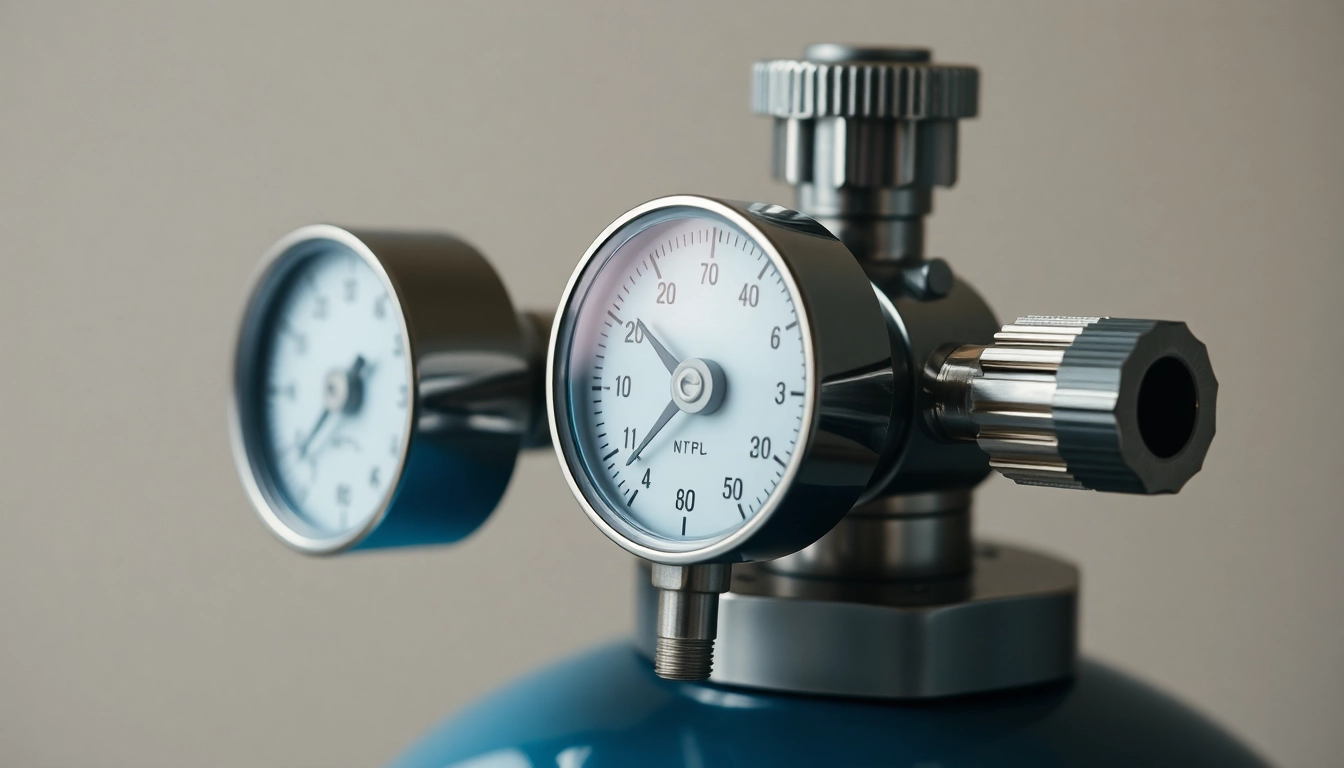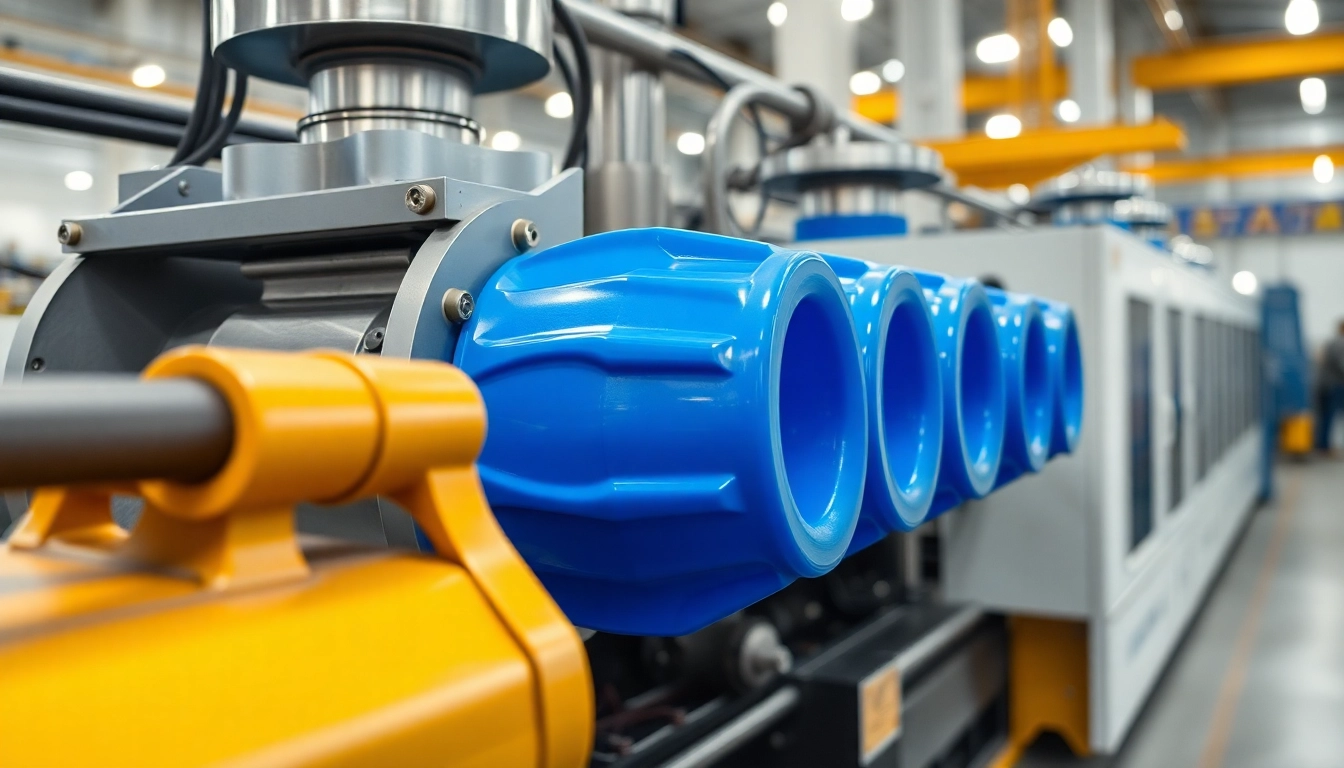Understanding Blow Molding Machines
What is a Blow Molding Machine?
A blow molding machine is an essential piece of equipment used in the manufacturing of hollow plastic parts. This machine utilizes a process that involves inflating a soft plastic parison with air into a mold, allowing it to take the shape of the desired product. Blow Molding Machines are widely used in various industries for producing items like bottles, containers, and automotive parts. The manufacturing process is efficient and capable of producing high volumes of products with consistent quality.
Types of Blow Molding Processes
There are three primary types of blow molding processes: extrusion blow molding (EBM), injection blow molding (IBM), and injection stretch blow molding (ISBM). Each method has its specific advantages and ideal applications:
- Extrusion Blow Molding (EBM): This method starts with melting plastic pellets into a continuous tube or parison, which is then clamped into a mold and inflated. EBM is widely used for producing large containers and hollow parts.
- Injection Blow Molding (IBM): In this process, a pre-molded parison is heated and placed in a closed mold where air is injected to expand it to the desired shape. IBM is typically used for producing smaller items like cosmetic bottles and pharmaceutical containers, allowing for precise dimensions and improved surface quality.
- Injection Stretch Blow Molding (ISBM): This technique combines injection and blow molding. The preform is first injection molded, then heated and stretched in the mold to form a bottle. ISBM is commonly used for producing strong and lightweight PET bottles.
Components and Technology
A blow molding machine consists of several crucial components:
- Extruder: This unit melts and forms the plastic into a parison, typically utilizing a cylindrical barrel and a rotating screw mechanism.
- Clamp Unit: It holds the mold components together during the blowing process, ensuring the molded part retains its shape.
- Mold: The mold defines the shape and size of the final product, consisting of two halves that close and open to release the finished item.
- Blow Unit: This part injects air into the parison, causing it to expand and conform to the mold’s interior.
- Control System: Advanced blow molding machines utilize computerized systems to monitor and adjust parameters such as temperature, pressure, and cycle time, ensuring precision and efficiency in production.
Applications of Blow Molding Machines
Common Products Manufactured
Blow molding machines produce a wide array of plastic products, including:
- Bottles (for beverages, chemicals, and personal care products)
- Containers (for food storage, pharmaceuticals, and household items)
- Automotive parts (fuel tanks, dashboard components, and bumpers)
- Large industrial products (like drums and tanks)
Industry Use Cases
Different industries leverage blow molding machines based on their specific requirements. Some notable sectors include:
- Food and Beverage: Manufacturers in this sector frequently use blow molding for producing bottles and containers that meet strict safety and quality standards.
- Consumer Goods: Items such as shampoo bottles, detergent containers, and toys benefit from the versatility and cost-effectiveness of blow molding.
- Automotive: The automotive industry employs blow molding to fabricate lightweight and durable parts that enhance fuel efficiency and performance.
- Pharmaceuticals: Blow-molded containers and bottles are crucial in storing and transporting chemicals, ensuring product safety and compliance with regulations.
Case Studies: Success Stories
Numerous companies have successfully integrated blow molding technology into their operations, illustrating the diverse applications of these machines:
- Case Study 1: A beverage company that adopted EBM technology saw a 30% reduction in material usage while increasing production speeds by 20%, allowing them to meet growing consumer demand effectively.
- Case Study 2: An automotive parts supplier transitioned to ISBM, enabling them to manufacture lighter components that improved vehicle fuel efficiency. Their investment in modern blow molding machines led to a significant decrease in production waste and operational costs.
- Case Study 3: A cosmetics brand using IBM for bottle manufacturing managed to create more complex designs with enhanced aesthetics, resulting in a 25% increase in market share after launching a new line of premium products.
Choosing the Right Blow Molding Machine
Key Factors to Consider
Selecting the ideal blow molding machine requires careful evaluation of several factors:
- Production Volume: Estimate your required output to determine whether an automatic or semi-automatic machine suits your needs.
- Material Compatibility: Assess the types of plastics you plan to use, as different machines are best suited for specific materials.
- Space and Layout: Consider the available floor space to ensure you choose a machine that fits your production environment.
- Budget: Establish a budget that encompasses not only the purchase of the machine but also ongoing maintenance and support costs.
Comparing Automatic vs Semi-Automatic
When assessing blow molding machines, manufacturers typically face a choice between automatic and semi-automatic systems:
- Automatic Machines: These machines automate the entire process from loading material to final production, reducing labor costs and minimizing human error. They are ideal for high-volume production runs.
- Semi-Automatic Machines: While requiring more manual intervention, these machines may prove cost-effective for lower production volumes or businesses just starting their blow molding operations. They offer flexibility in processing different types of products but may necessitate increased supervision.
Manufacturer Reputation and Support
Selecting a reputable manufacturer is crucial. Research their history, customer reviews, and the support they offer. Reliable customer service and technical support can significantly impact your operational efficiency.
Operational Efficiency and Cost Factors
Initial Investment vs Long-Term Savings
The upfront cost of acquiring a blow molding machine can be substantial, but it’s essential to analyze the potential long-term savings. Higher efficiency and lower material waste can translate into significant financial benefits over time.
Maintenance and Operational Costs
Ongoing maintenance is vital to ensure the longevity and efficiency of your blow molding machine. Regular inspections and timely repairs can prevent costly downtimes and prolong the machine’s life. Budget for parts replacement and routine maintenance services as part of your overall operational costs.
Energy Efficiency in Modern Machines
Contemporary blow molding machines increasingly focus on energy efficiency, which is crucial in an era of rising energy costs and environmental concerns. Look for machines implementing servo motors and advanced heating techniques that significantly reduce energy consumption without sacrificing productivity. Such improvements not only decrease operational costs but also contribute to a more sustainable manufacturing process.
Future Trends in Blow Molding Technology
Innovations in Blow Molding
The blow molding industry is evolving with technology innovations that enhance productivity, flexibility, and the quality of end products. Enhanced automation, integration with Industry 4.0, and data analytics are paving the way for smarter manufacturing processes that can adapt to market changes swiftly.
Sustainability and Eco-Friendly Solutions
With growing environmental concerns, the industry is moving towards sustainable practices. Many manufacturers are focusing on producing recyclable materials and reducing plastic waste in blow molding processes. Innovations in bioplastics and improved recycling capabilities present new opportunities for eco-friendly product options.
Market Forecasts and Opportunities
As demand for lightweight, durable, and eco-conscious products continues to rise, the blow molding market is projected to grow significantly. Manufacturers that adapt to market trends and invest in advanced technology will likely lead the next wave of innovation, providing competitive advantages in their respective industries.



